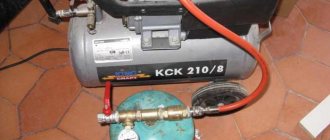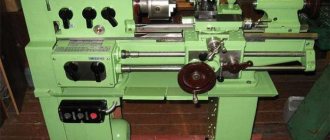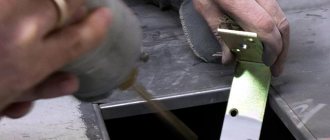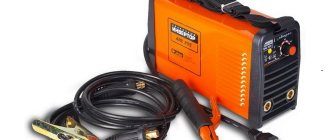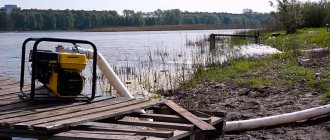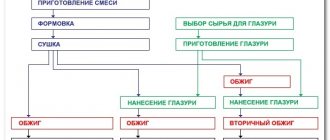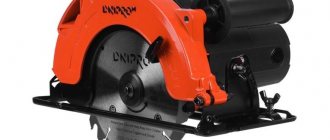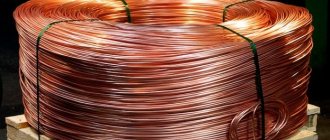Modification of various designs, parts and functional elements is often carried out by completely changing the structure of the materials. For this purpose, means of deep thermal, plasma and chemical processing are used. But there is also a wide segment of methods for changing performance properties through external coatings. Such methods include vacuum metallization, thanks to which it is possible to improve the decorative, conductive, reflective and other characteristics of materials.
General information about the technology
The essence of the method is to spray metal particles onto the working surface. The process of forming a new coating occurs due to the evaporation of donor metals under vacuum conditions. The technological cycle involves performing several stages of structural changes in the target base and coating elements. In particular, the processes of evaporation, condensation, absorption and crystallization are distinguished. The key procedure can be called the interaction of metal particles with the surface under conditions of a special gas environment. At this stage, vacuum metallization technology ensures the processes of diffusion and attachment of particles to the structure of the workpiece. At the output, depending on the spraying modes, coating characteristics and type of workpiece, a variety of effects can be obtained. Modern technical means make it possible not only to improve individual performance qualities of a product, but also to differentiate with high accuracy the properties of the surface in individual areas.
Vacuum plasma spraying
In such systems, under a certain gas pressure, a metallized coating is created by strongly heating the metal source, as a result of which it evaporates and the particles settle on the workpiece. The chamber can be metal or glass, always with a water cooling system. The following evaporators are used to heat the sprayed element:
- direct-heat wire or strip tungsten or molybdenum evaporator;
- electron-radial, creating heating using electrical bombardment.
In accordance with the source metal or alloy that needs to be sprayed onto the part, the heating temperature in the heat exchanger is set; it can reach 20 thousand °C. If the sprayed metal does not have very good adhesion to the workpiece material, a primary layer of metal with higher adhesive properties is first applied.
Equipment used
There are three main groups of machines used for this technology. These are continuous, semi-continuous and batch equipment. Accordingly, they differ in terms of the general organization of the processing process. Continuous units are often used in serial production where continuous vacuum metallization is required. Equipment of this type can be single- or multi-chamber. In the first case, the units are oriented towards performing metallization directly. Multi-chamber models also provide the possibility of implementing additional procedures - initial preparation of the product, control, heat treatment, etc. This approach allows us to optimize the manufacturing process. Machines for batch and semi-continuous metallization usually have one main chamber. It is precisely because of the irregularity of production that they are used for a specific procedure, and preparatory operations and the same quality control are carried out in a separate order - sometimes manually without automated lines. Now it’s worth taking a closer look at what components such units consist of.
Climate chambers
Such installations are classified as testing equipment. Climate chambers make it possible to test products and various materials for their resistance to aggressive natural and mechanical influences. The equipment is most widely used in scientific and research activities. It is used in the defense industry, metallurgy and food production.
Climate chambers, the price of which depends on their configuration, allow you to accurately simulate temperature changes, exposure to humid, salt and acidic environments, vibration, solar radiation, pressure and other factors affecting the durability of materials and products. Depending on the type of impact, equipment is classified according to the following functionality:
- heat chambers - CT;
- cold chambers – KH;
- heat-cold chambers – KTH;
- heat-cold-moisture installations – KTHV;
- heat-moisture or cold-moisture systems - KTV and KHV;
- salt fog and solar radiation chambers - KST and KSR;
- installations for laboratory explosions and other units.
Equipment modifications are so diverse that, if necessary, you can select a specific design option for carrying out the technical process. Units can be narrowly specialized (heat or cold chambers) or universal (heat-cold-moisture units and others).
Standard equipment design:
- housing with a working volume - has the form of a cabinet, inside of which there are heat exchangers and various devices for monitoring testing;
- refrigeration unit – ensures the creation of a low temperature regime, mounted on a foundation slab;
- control panel - devices and instruments for controlling equipment are installed in it.
Some modifications of installations provide for the presence of several cameras, each of which performs specific functions.
Design of machines for metallization
In addition to the main chamber, where the deposition processes take place, the equipment includes many auxiliary systems and functional components. First of all, it is worth highlighting the direct sources of the sprayed material, whose communications are connected to the gas distribution complex. In order for the vacuum metallization installation to provide the parameters necessary for a specific processing task, the deposition supply channels with regulators allow, in particular, to adjust the temperature level, flow speed and volumes. In particular, this infrastructure is formed by leaks, pumps, valves, flange elements and other fittings.
In modern installations, for the same regulation of operating parameters, sensors connected to a microprocessor unit are used. Taking into account the specified requirements and recording current actual values, the equipment can adjust processing modes without operator participation. Also, to facilitate operation processes, the equipment is supplemented with in-chamber cleaning and calibration systems. Thanks to such equipment, the repair of vacuum metallization of the machine is simplified, since constant and timely cleaning minimizes the risks of overloading pneumatic motors, manipulators and communication circuits. The latter are completely considered as a consumable part, the replacement of which in continuous units is carried out as part of regular maintenance.
see also
Comments 51
Hello. How do the reflectors behave there? Is there a photo of the assembly on the car?
Hello! I’m ashamed to say - I haven’t done it yet))) first one thing, then another... but for the guys with whom I did it at the same time, everything was fine. Now the second batch is being assembled in St. Petersburg for restoration.
And the photos - what is there to see? Visteon and Visteon... full staff, looks like full staff! =))
Is there anyone there you can cooperate with? Only mondists or Mercedes headlights are also possible?
It makes no difference, the main thing is that the reflectors are made of metal... well, and not the size of a saucer)) so that they fit into the camera
Write a personal message to Vlad (aka Belumba), he’s throwing a banquet there today) maybe you’ll still have time to join
Plastic in the trash! no options((
Congratulations. Drank the replacement report!
I still have to live))
The car is sick)) you need to fix one thing first
Congratulations. Drank the replacement report!
I installed the same ones today, although it’s light outside and I still don’t understand how light they are
